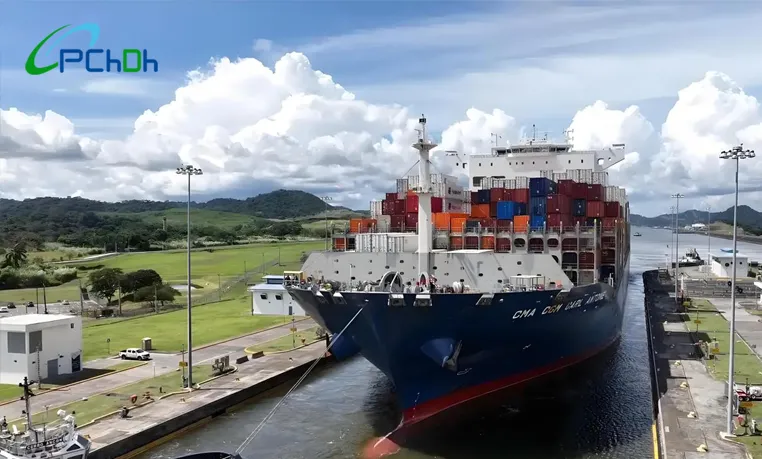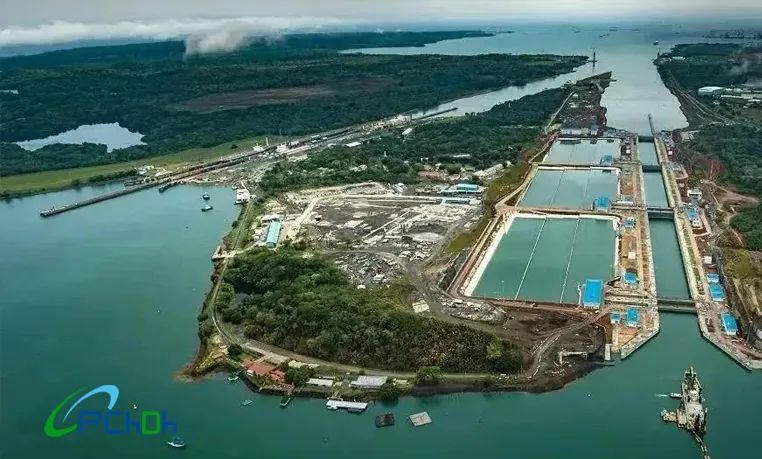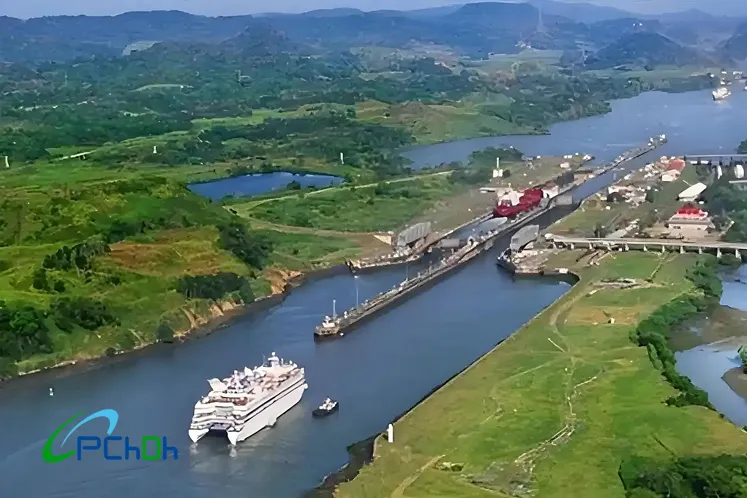In the global shipping landscape, the Panama Canal is like a shining link, spanning the Isthmus of Panama in Central America, closely connecting the Atlantic and Pacific Oceans. It is not only a great engineering miracle, but also an indispensable key factor in international trade and geopolitics, carrying more than a hundred years of historical changes and the evolution of the world pattern.
1. Historical Origin: The tortuous journey of turning dreams into reality
Since the 15th century, mankind has cherished the great dream of digging a canal across the Isthmus of Panama. At that time, Spanish colonists first came up with this idea in order to more conveniently transport the gold and silver treasures looted from South America to Europe. However, the technology and resource conditions at that time were far from sufficient to support such a grand project, and this dream had to be temporarily shelved.
It was not until the early 18th century that Spain officially decided to start the canal construction plan, but the outbreak of the Latin American War of Independence brought the entire plan to an abrupt halt. Subsequently, Panama, which was under the jurisdiction of Colombia, sought help from developed countries in Europe and the United States to build a canal due to Colombia’s own lack of technology and financial resources. The United States showed great interest in this, but failed to reach an agreement with Colombia in decades of negotiations.
In 1869, the Suez Canal, led by France , was successfully opened to navigation, which brought new hope to the construction of the Panama Canal. Colombia turned to France for help, and France resolutely started the construction of the Panama Canal in 1880 without conducting sufficient surveys. However, the complex geographical environment in Panama brought many severe challenges to the project: there are many mountains, complex terrain, and great difficulty in excavation; it is located at the junction of plates, the geology is unstable, and geological disasters such as landslides and mudslides occur frequently; in the tropical climate.
Sudden heavy rains will wash silt into the newly dug river channel, and the long rainy season will frequently damage equipment; tropical diseases such as malaria and yellow fever are rampant, resulting in a large number of casualties among workers; there is a height difference of 20-30 cm between the Pacific and Atlantic Oceans, and the Gatun Lake, as the main waterway, has a large drop from the sea level, and a “water elevator” needs to be built to regulate the water level; the isthmus is covered with dense tropical rainforests and swamps, and the construction environment is harsh and transportation is inconvenient. In the end, France had no choice but to stop construction due to engineering and technical difficulties and high mortality rates of workers.
At this time, the increasingly powerful United States decided to intervene in the construction of the Panama Canal again. US President Roosevelt was well aware of the strategic significance of the canal and must control it in his own hands. After negotiations with Colombia failed, the United States took a different approach and supported Panama’s independence from Colombia. In 1903, the United States got what it wanted and obtained the right to dig the canal and “permanently use, occupy and control” the canal and the canal zone at the cost of a one-time payment of US$10 million.
An annual rent of US$250,000 nine years later. Subsequently, the United States launched a large-scale mosquito eradication campaign, eliminating the sources of malaria and yellow fever in two years, creating conditions for the start of the project. Chief Engineer Stevens designed a three-level lock system, formed the Gatun Lake by building a dam, reduced the amount of canal excavation, and split a mountain to form the Culebra Waterway . After 10 years of hard work and spending US$400 million, the Panama Canal was finally officially opened in 1914, and more than 75,000 workers paid for it.
The year the Panama Canal opened, World War I broke out. World War I was a contest of comprehensive national strength, such as industry, which brought heavy burdens to European countries and caused the European economy to collapse. European powers, led by Britain, declined after World War I. Germany, Russia, the Austro-Hungarian Empire, and the Ottoman Empire either declined or disappeared. Britain and France also became debtor countries. Under such circumstances, European powers could not maintain their sphere of influence in China. The United States, Japan, and the socialist Soviet Union, which had greatly increased their strength during World War I, took advantage of the decline of European powers to begin competing for control over China.

2. Strategic significance: A golden waterway that reshapes the global trade landscape
The opening of the Panama Canal is like a key that opens a new situation for global trade. It greatly shortens the voyage between the Atlantic and Pacific Oceans, allowing ships that originally had to go around Cape Horn at the southern tip of South America to now pass directly through the canal, shortening the voyage by 5,000 to 10,000 kilometers, greatly saving transportation time and costs. This change has a particularly significant impact on the United States. It not only facilitates the connection between the east and west coasts of the United States and promotes the development of domestic trade, but also enables it to occupy a more advantageous position in international trade and military strategy. Since then, American merchant ships and warships can shuttle between the two oceans more quickly, strengthening its influence on global affairs.
Over time, the Panama Canal has gradually become a key hub for world shipping. Today, about 5% of the world’s traded goods pass through here, and canal revenue, including tolls, accounts for about one-fifth of the Panamanian government’s annual revenue. In 2024, the Panama Canal’s net revenue reached US$3.453 billion. Among the users of the Panama Canal, the United States has the largest total tonnage, accounting for about 70% of the total tonnage, and its importance to the US economy is self-evident. But the importance of the canal is not limited to the United States. It has facilitated trade between countries around the world, promoted the integration and development of the world economy, and has become a veritable “world bridge.”
my country is the second largest user of the Panama Canal, with 120 million tons of cargo passing through the canal each year, accounting for 18% of the canal’s total cargo volume. According to the current Panama Canal rates, Chinese shipping companies pay about $1.5 billion to $1.8 billion in tolls each year.

3. Return of sovereignty: the unremitting struggle of the Panamanian people
For nearly a century, although the Panama Canal has brought huge benefits to the United States, the Panamanian people have long been oppressed. The United States not only controls the management of the canal and ports, but also establishes the so-called “Canal Zone” along the coast, which is subject to US law. Panamanians must obtain approval to enter the Canal Zone. In order to regain sovereignty over the Panama Canal, the Panamanian people have waged a long and arduous struggle, among which the “Flag Protection Movement” on January 9, 1964 became an important milestone in the struggle. In this movement, the Panamanian people expressed their desire and pursuit of sovereignty with their blood and lives.
After years of efforts, in 1977, the United States and Panama signed the new Panama Canal Treaty and the Treaty on the Permanent Neutrality and Operation of the Panama Canal.
In 1997, Hutchison Whampoa, owned by Li Ka-shing, obtained the operating rights of the Port of Balboa (Pacific side) and the Port of Cristobal (Atlantic side) at both ends of the Panama Canal through public bidding, with a lease term of 25 years. These two ports are important hubs of the Panama Canal, connecting the Atlantic and Pacific Oceans, and are of strategic significance to global trade. In the same year, Li Ka-shing became a Canadian citizen, and his two sons, Li Zeju and Li Zekai, are both Canadian citizens.
According to the treaty, Panama will take back all the management and defense rights of the canal and withdraw all U.S. troops stationed in the canal zone from December 31, 1999. On this day, the Panamanian people finally welcomed the return of the sovereignty of the canal, which symbolized Panama’s independence and dignity and brought new opportunities for Panama’s development.
4. Expansion and upgrading: adapting to the changes of the times
Although the Panama Canal is an important shipping route connecting the Pacific and Atlantic Oceans, it is not the most important route for global oil transportation. In 2015, oil transportation accounted for only 1.7% of the world’s total transportation volume. On the one hand, the Panama Canal can be replaced by other strait routes, such as the Strait of Magellan , the Cape Horn Strait and the Drake Passage , but passing through these straits will increase the transportation distance, which will greatly increase the transportation time and cost. On the other hand, due to the limited width of the canal, it cannot meet the navigation of some large oil tankers such as super-large oil tankers.
With the continuous growth of global trade and the trend of larger ships, the original navigation capacity of the Panama Canal has gradually failed to meet the demand. In order to adapt to the development of the times, the Panama Canal Authority launched the first expansion project since the completion of the canal in 1914 in 2007. The project lasted for 9 years and was completed in June 2016. It included deepening and widening the river channel and building a larger set of locks. The expanded Panama Canal can accommodate larger tonnage ships, further enhancing its competitiveness in global shipping.
China not only helps Panama build infrastructure, but also further deepens economic ties through port cooperation. By 2025, Chinese companies have won five important ports in Panama, including projects of Landbridge Group and Port Group. These ports can not only bring huge economic benefits to China, but also become an important fulcrum of the “Belt and Road” initiative.
The expanded Panama Canal is of great significance to the oil trade between China and Latin American countries. It saves nearly half of the transportation time, helps to ensure the security of China’s oil imports from Latin American countries, and plays an important role in both political and strategic aspects. At the same time, it also provides more solid infrastructure support for the further prosperity of global trade.

5. Current situation and challenges: The canal in the geopolitical vortex
In recent years, the Panama Canal has once again become the focus of international attention. In December 2024, US President-elect Donald Trump posted on social media accusing the Panama Canal of charging excessive fees to US ships passing through it, calling the Panama Canal an “important national asset of the United States” and threatening that the United States would “take back” the Panama Canal. Since then, Trump has reiterated this position many times, and even stated that he would not rule out the use of military force to seize control of the Panama Canal. This statement has aroused widespread concern and concern from the international community, and has also plunged the Panama Canal into a geopolitical vortex.
The Panamanian government firmly opposes Trump’s remarks and threats, and has repeatedly stressed that the Panama Canal and its adjacent areas will always belong to Panama, and Panama’s sovereignty and independence are not negotiable. Panamanian President José Moulino and three former presidents issued a joint statement reaffirming Panama’s control over the Panama Canal and stating that national sovereignty must not be violated. The Panama Canal Authority also stated that the process of formulating canal toll standards is open and transparent, and that there will be no separate price reduction for American ships.
Facing threats from the United States, the Panama Canal Authority has hired a US law firm to provide it with “legal and strategic advice” related to the US government. At the same time, Panamanians have also expressed that they will unite to defend the sovereignty of the country and the canal. Local residents said that the canal is part of Panama and represents national identity. Some people also held protests to boycott the relevant statements of the United States and oppose the United States’ infringement on Panama’s sovereignty.
Conclusion
Throughout history, the Panama Canal has witnessed human wisdom and courage, struggle and victory, and has also faced challenges and disputes in reality. It is not only a waterway connecting the two oceans, but also a symbol of international cooperation and exchange, carrying the hope of global trade and economic development.
Recently, Cheung Kong Hutchison Holdings Limited, owned by Li Ka-shing, reached a transaction agreement with the American BlackRock-TiL consortium, which shocked China and the world, and planned to sell its non-Chinese assets of Hutchison Port Holdings for US$22.8 billion. The most eye-catching of these are the Port of Balboa and the Port of Cristobal at both ends of the Panama Canal, as well as 43 ports in 23 countries around the world. Li Ka-shing, who considers himself a Chinese, handed over the port assets at both ends of the Panama Canal during the Sino-US game, which is a short-sighted act of “forgetting righteousness for the sake of profit and betraying national interests.”
The history of the Panama Canal is a game of technology and politics. All countries can respect Panama’s sovereignty and jointly maintain the peace and stability of the canal, so that this “bridge of the world” can continue to contribute to the development and progress of mankind.

